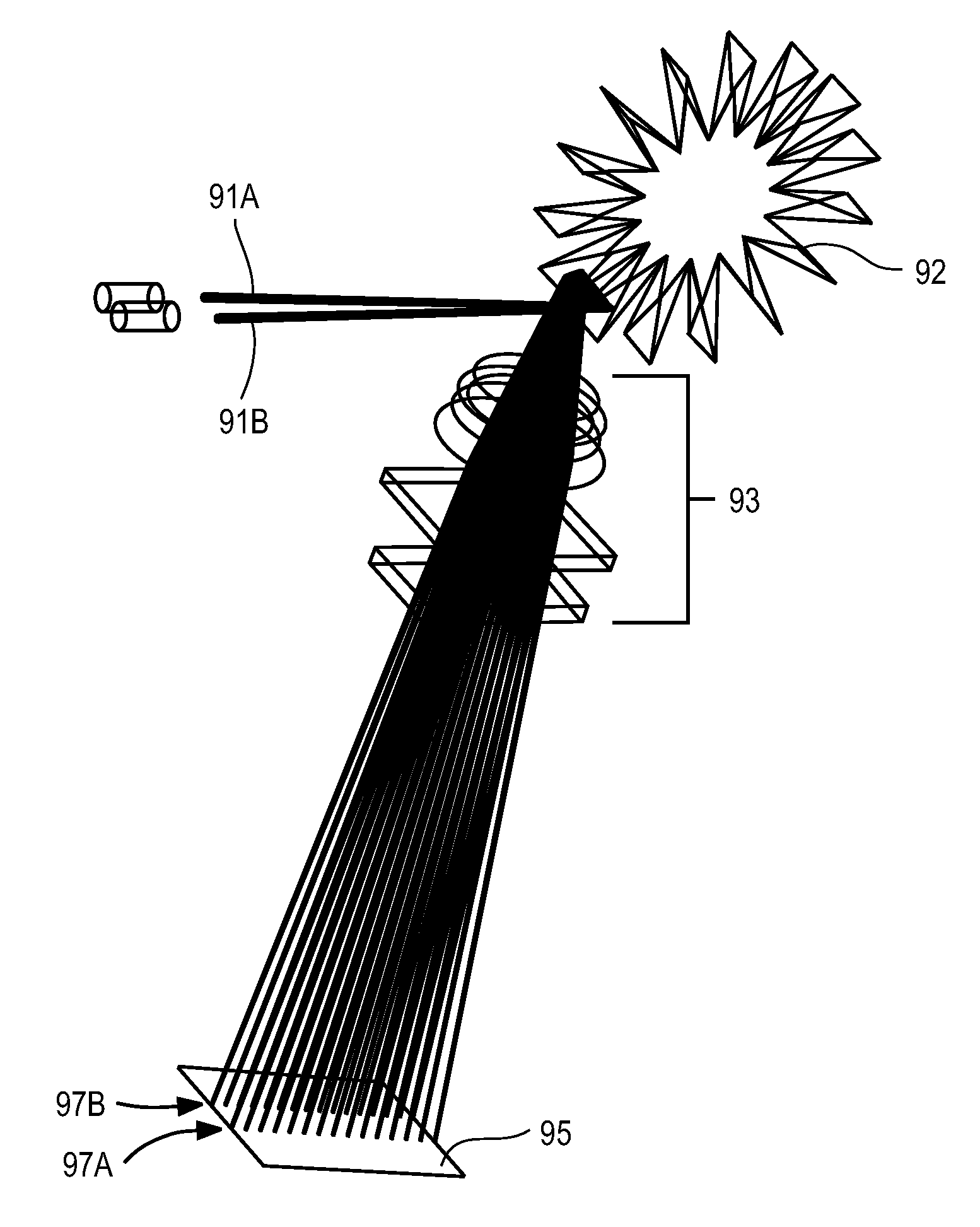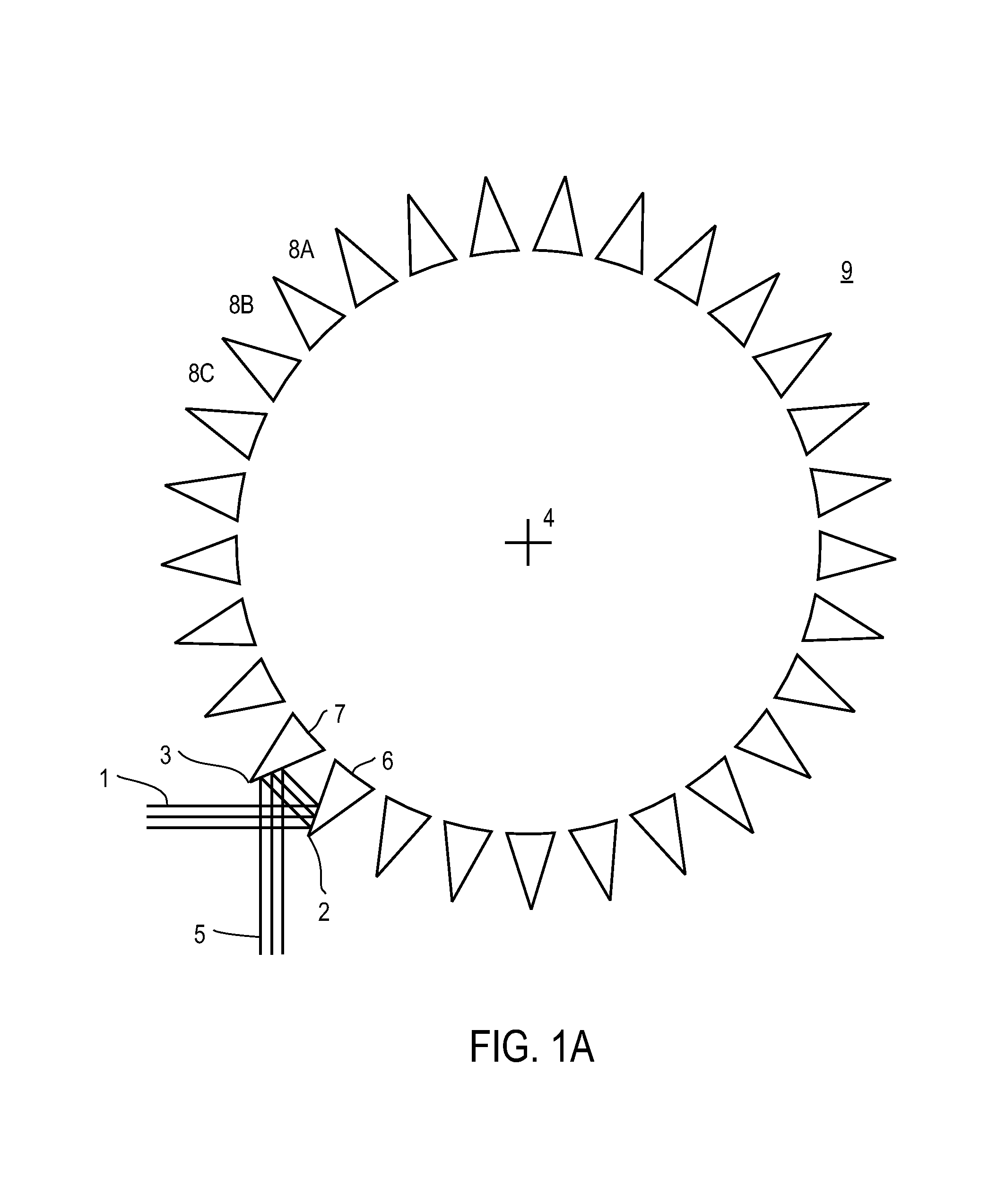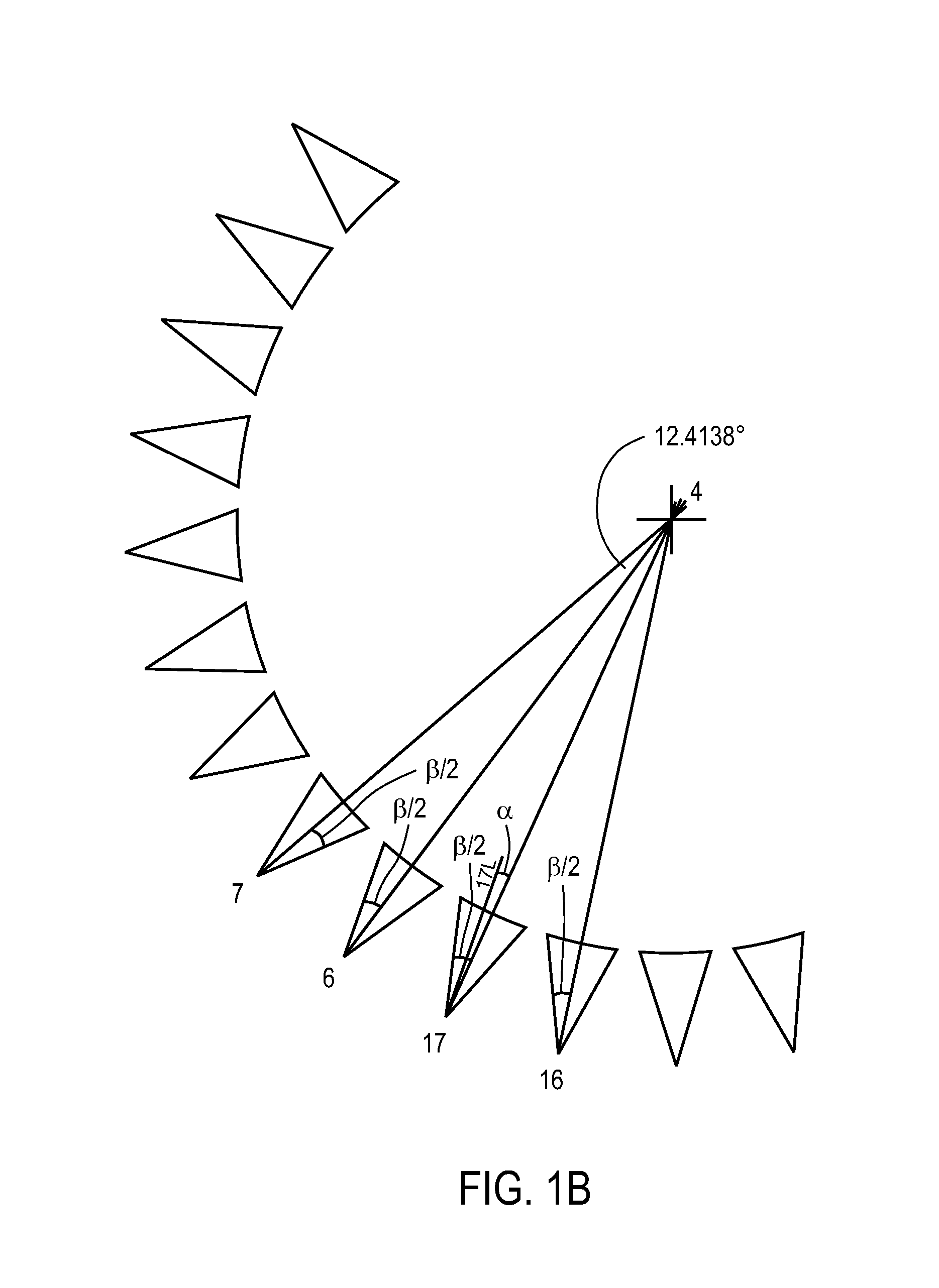Optical pattern generator using a single rotating component
a technology of optical pattern generator and rotating component, which is applied in the field of optical pattern generator using a single rotating component, can solve the problems of limiting the scan rate, unsuitable for certain applications, and restricting the patterns that can be generated, and achieves high radiometric efficiency, convenient rotation, and high speed
- Summary
- Abstract
- Description
- Claims
- Application Information
AI Technical Summary
Benefits of technology
Problems solved by technology
Method used
Image
Examples
Embodiment Construction
[0040]FIG. 1A is a side view of an optical pattern generator according to the invention, where the incident optical beam 1 lies substantially in the plane of rotation of rotatable component 9. In this example, the rotating component 9 is divided into twenty nine sectors 8A, 8B, 8C, etc., which are arranged in a circle centered on the rotation axis 4 of the rotating component 9. The incident optical beam 1 propagates along a direction that lies in the plane of rotation. Each sector 8 includes a pair of reflective elements (e.g., reflective surfaces 2 and 3 for the sector that is currently active). The surface normals of the reflective surfaces have a substantial component in the plane of rotation. In this example, the rotating component 9 includes prisms 6, 7, etc. that are arranged in a circle. The faces of the prisms are reflectively coated and the reflectively coated surfaces from adjacent prisms (e.g., reflective surfaces 2 and 3 from prisms 6 and 7) form the opposing reflective ...
PUM
 Login to View More
Login to View More Abstract
Description
Claims
Application Information
 Login to View More
Login to View More - R&D Engineer
- R&D Manager
- IP Professional
- Industry Leading Data Capabilities
- Powerful AI technology
- Patent DNA Extraction
Browse by: Latest US Patents, China's latest patents, Technical Efficacy Thesaurus, Application Domain, Technology Topic, Popular Technical Reports.
© 2024 PatSnap. All rights reserved.Legal|Privacy policy|Modern Slavery Act Transparency Statement|Sitemap|About US| Contact US: help@patsnap.com










